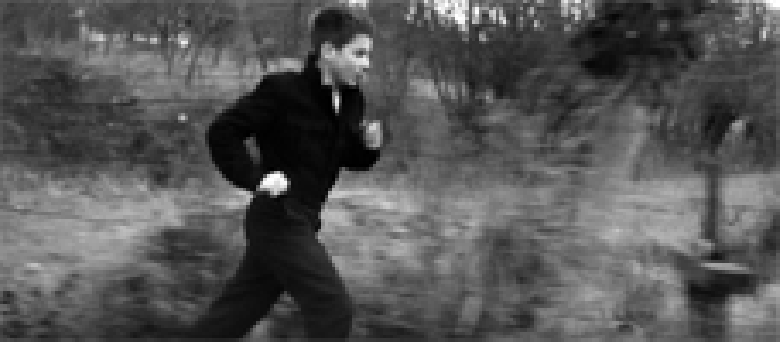Credits
Feature by: Adam Balz, Jonathan Bett, David Carter, Aaron Cutler, Ben Ewing, Cullen Gallagher, Leo Goldsmith, Jenny Jediny, Evan Kindley, Victoria Large, Thomas Scalzo, Stephen Snart, and Rumsey Taylor
Posted on: 28 March 2010
François Truffaut’s early films – in particular, the holy trinity of The 400 Blows, Shoot the Piano Player, and Jules and Jim – have never lacked for attention. They’re frequent inclusions on best-of lists by both critics and filmmakers, and unavoidable topics in any historical account of the French New Wave. These movies, especially the autobiographical 400 Blows, so define Truffaut’s reputation that it can be hard to see past them. While a handful of later works – his Ray Bradbury adaptation Fahrenheit 451, affectionate moviemaking satire Day for Night, and one or more entries in his ongoing Antoine Doinel series, perhaps – have something of the same cachet, the Truffaut of the history books is really the young Truffaut, the enfant terrible who emerged from a life of juvenile delinquency to challenge the French film industry and its “tradition of quality” with a more personal, passionate, and subjective kind of cinema. “The film of tomorrow appears to me as even more personal than an individual and autobiographical novel, like a confession, or a diary,” Truffaut famously wrote in 1957. “The film of tomorrow will be an act of love.”
This kind of rhetoric quickly established Truffaut as the most romantic and subjective of the New Wave directors, a crusader for personal expression. Yet Truffaut, in his short working life, made a total of twenty-one feature films of a surprising variety, many of which fail to fit into the personalist framework offered by his early criticism and which are correspondingly often ignored. The monumental shadow cast by his early work – and, by extension, the work of his compatriots in the French New Wave – has tended to overdetermine reactions to his career as a whole, in ways that are not always particularly favorable to Truffaut as an artist. Ironically, the figure most associated with la politique des auteurs seems today to have benefited least from its emphasis on complete careers rather than isolated successes.
If Truffaut once seemed to exemplify the New Wave, he is now beginning to seem, in light of subsequent developments in the history of cinema, like an anomaly within it; in any case, he no longer seems as central as he once did. Partly it has to do with his early death in 1984: while contemporaries like Jean-Luc Godard, Jacques Rivette, Eric Rohmer and Agnès Varda continued to turn out films and develop their aesthetic and thematic concerns into the 2000s, it’s inevitable that they would get a greater share of critical attention. But it also has much to do with Truffaut’s development and reception in his own time. Despite his early reputation for anti-establishment fervor – due in part to the role his biting film criticism played in preparing the ground for the New Wave in France – Truffaut in fact proved the least revolutionary of the New Wave directors. Especially in the late 60s and 70s, when many of his contemporaries were experimenting with cinematic form, Truffaut was immersing himself in the technical details of production and paying homage to forebears like Jean Renoir and Alfred Hitchcock. Similarly, while Godard, Rivette and others gravitated toward radical leftist politics, Truffaut, ever the contrarian, emphasized his staunch resistance to political and social themes: “There is nothing social in my films… I am completely asocial. I never vote and I don’t have a library card.”1 Truffaut’s professionalism and antipathy toward politics provoked strong reactions. Disgusted with what he perceived as the bourgeois quietism of Day for Night – a film that is indeed, in many ways, a hymn to compromise – Jean-Luc Godard scornfully declared his old friend “a businessman in the morning and a poet in the afternoon,” a remark meant as an insult but apt enough as a description of the director’s work ethic to be frequently attributed to Truffaut himself.
It may be too that Truffaut’s relative commercial success – in France as well as in America, where he was the only New Wave director to make considerable inroads in the 1970s – has prejudiced some latter-day cinephiles against him. He never scorned the popular, took pride in making self-financed films that recouped their financial outlays, and showed a remarkable facility in a number of commercial genres, from light comedy to science fiction to thrillers (a versatility that must have endeared him to Steven Spielberg, who cast him in his 1977 Close Encounters of the Third Kind).2 But at the same time, Truffaut never ceased wrestling with personal demons in his work. Later films, like Two English Girls, The Green Room and The Story of Adele H. are little seen today, but make up an important part of Truffaut’s overall achievement. These films explore a darker, more obsessive side of romantic relationships than the lighter fare for which the director is better known. And even more accessible films like Day for Night and Small Change benefit from being placed in the larger context of Truffaut’s oeuvre.
What binds that oeuvre together, then, besides a consistently high level of craft and the recurrent themes of love and childhood? This is something we hope will become clear over the course of the following month, but one obvious through-line is the director’s lifelong emotional vulnerability and interest in suffering. Despite his claim to be “completely asocial,” Truffaut showed a degree of compassion toward those on the margins sometimes missing in more engagé avant-garde quarters: “My characters are on the edge of society. I want them to testify to human fragility, because I don’t like toughness. I don’t like very strong people or people whose weaknesses don’t show.”3 It may be profitable to think of Truffaut, then, as a “weak” filmmaker, in the sense of one who was interested in weakness, but who one also allowed himself to make “weak” films, to fail and try again. This emphasis doesn’t entail giving up on the idea of Truffaut as an auteur or a romantic so much as it does questioning the association of auteurism or romanticism with perfection and success. As Truffaut himself put it as early as 1955, in a discussion of Abel Gance’s La Tour de Nesle: “The question now is to see if it is possible to be both brilliant and a failure. I tend to believe that failing is a talent. Succeeding is failing… I’m convinced that there are no great directors who don’t sacrifice something.”4
Over the course of the next month, in which we will review all of Truffaut’s films, we will reconsider the career arc of this acknowledged master of cinema while refusing some of the easy narratives of that development. In turn, we hope to get a better handle on a complex filmmaker whose work can appear deceptively simple. Whether Truffaut emerges in the end as a “great” director is ultimately less important than that we make some effort toward seeing his work as a whole, attending to the weaknesses along with the strengths, the celebrated with the obscure—and in this way, perhaps, remain faithful to the spirit of the politique des auteurs after all.
Introduction by Evan Kindley
- François Truffaut, Interviews, ed. Ronald Bergan, 22. ↩
- Paradoxically, Truffaut came to find the constraints of genre freeing: “My taste leads me to pretend to be submitting to Hollywood genres (melodramas, thrillers, comedies, etc.). In the interior of the constraints of these genres, I express a great freedom of action all along my work” (50). He even preferred commercial constraints to the political ones that he perceived to be implicit in government financing: “I’ll go so far as to say that, concession for concession, it seems to me less shaming to have to give a film a happy ending for commercial reasons than to have to shoot an optimistic ending for ideological reasons” (32). ↩
- Interviews, 43. ↩
- Quoted in Antoine de Baecque and Serge Toubiana, Truffaut: A Biography, 99. ↩
By Adam Balz, Jonathan Bett, David Carter, Aaron Cutler, Ben Ewing, Cullen Gallagher, Leo Goldsmith, Jenny Jediny, Evan Kindley, Victoria Large, Thomas Scalzo, Stephen Snart, and Rumsey Taylor ©2010 NotComing.com
Reviews
-
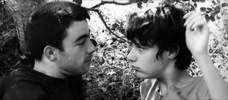
Les Mistons
1957 -
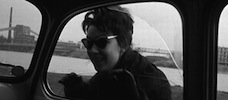
Une histoire d’eau
1958 -
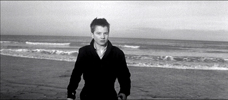
The 400 Blows
1959 -
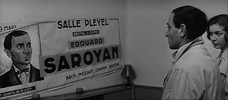
Shoot the Piano Player
1960 -

Jules and Jim
1962 -
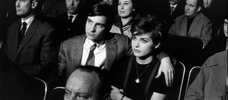
Antoine and Colette
1962 -
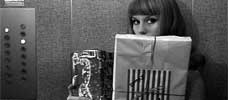
The Soft Skin
1964 -

Fahrenheit 451
1966 -
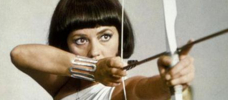
The Bride Wore Black
1968 -
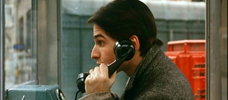
Stolen Kisses
1968 -
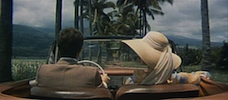
Mississippi Mermaid
1969 -
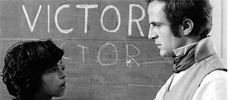
The Wild Child
1970 -
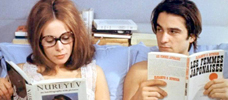
Bed and Board
1970 -

Two English Girls
1971 -
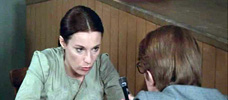
Such A Gorgeous Kid Like Me
1972 -

Day for Night
1973 -
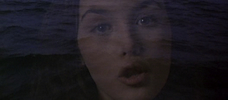
The Story of Adele H.
1975 -

Small Change
1976 -
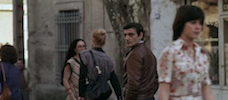
The Man Who Loved Women
1977 -
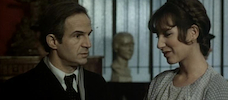
The Green Room
1978 -
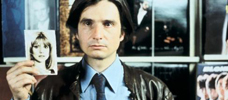
Love on the Run
1979 -
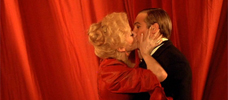
The Last Metro
1980 -
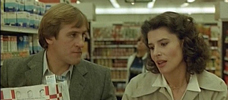
The Woman Next Door
1981 -
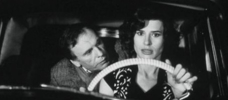
Confidentially Yours!
1983
We don’t do comments anymore, but you may contact us here or find us on Twitter or Facebook.



